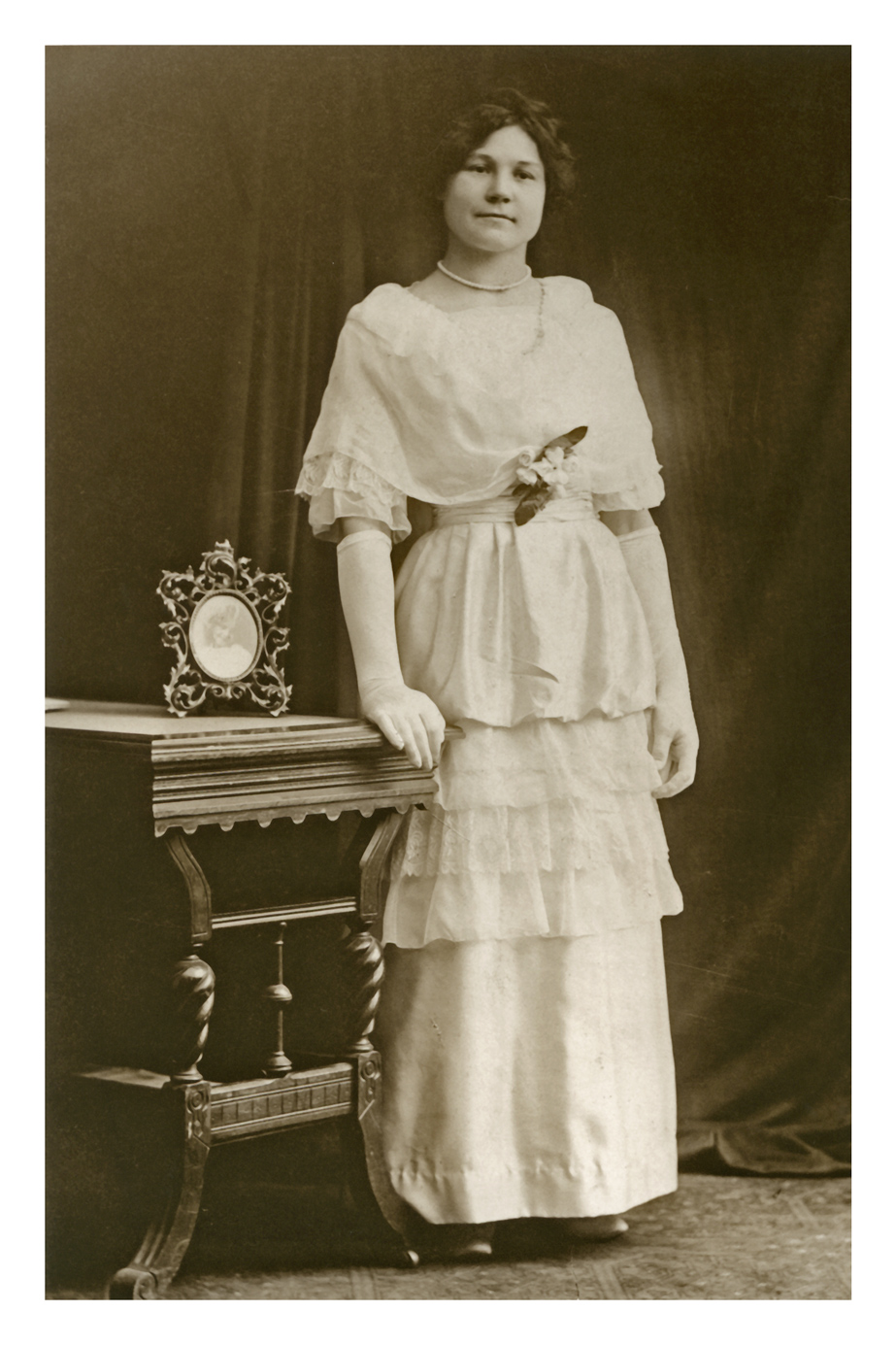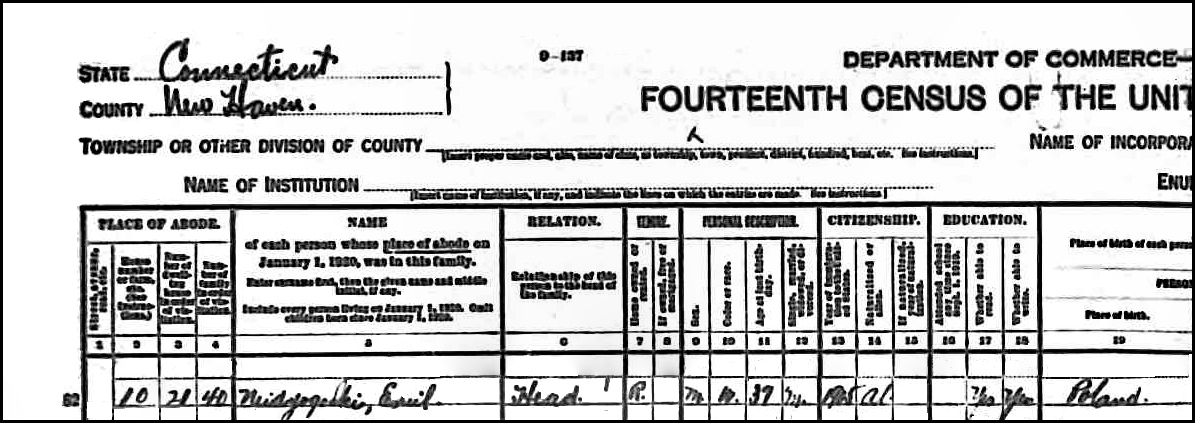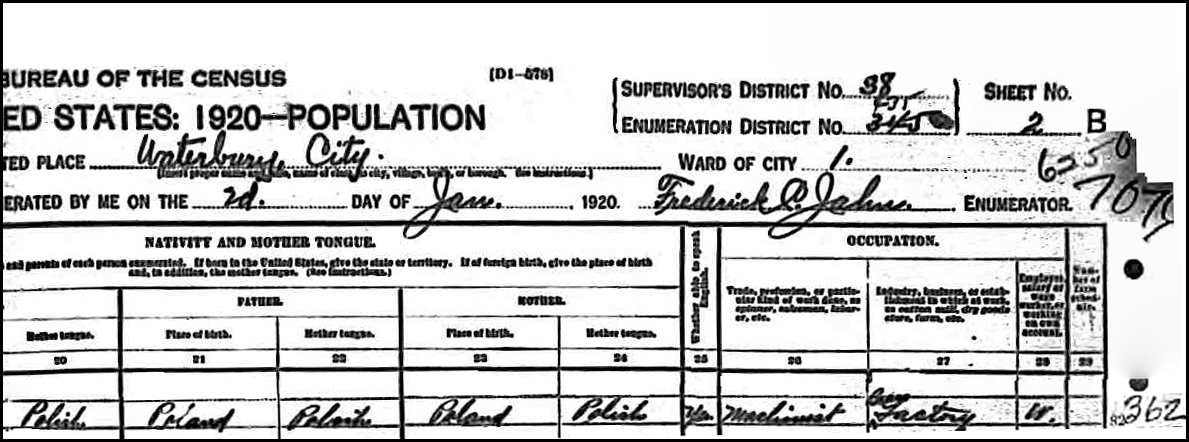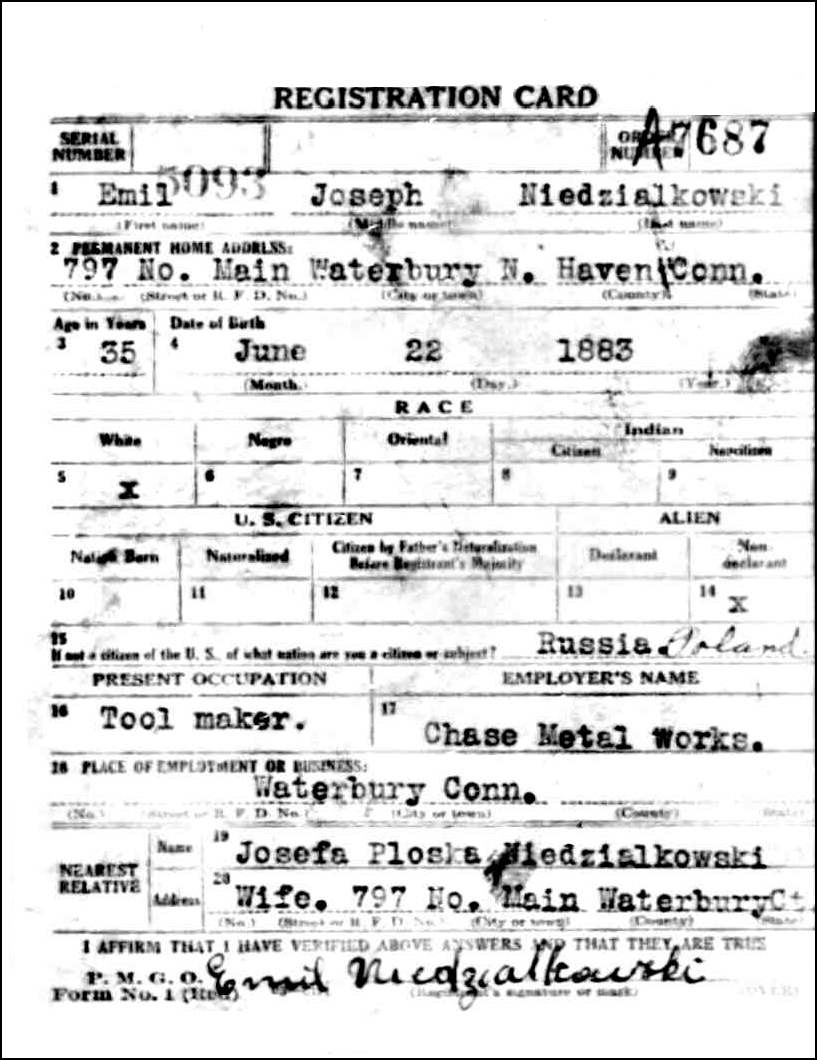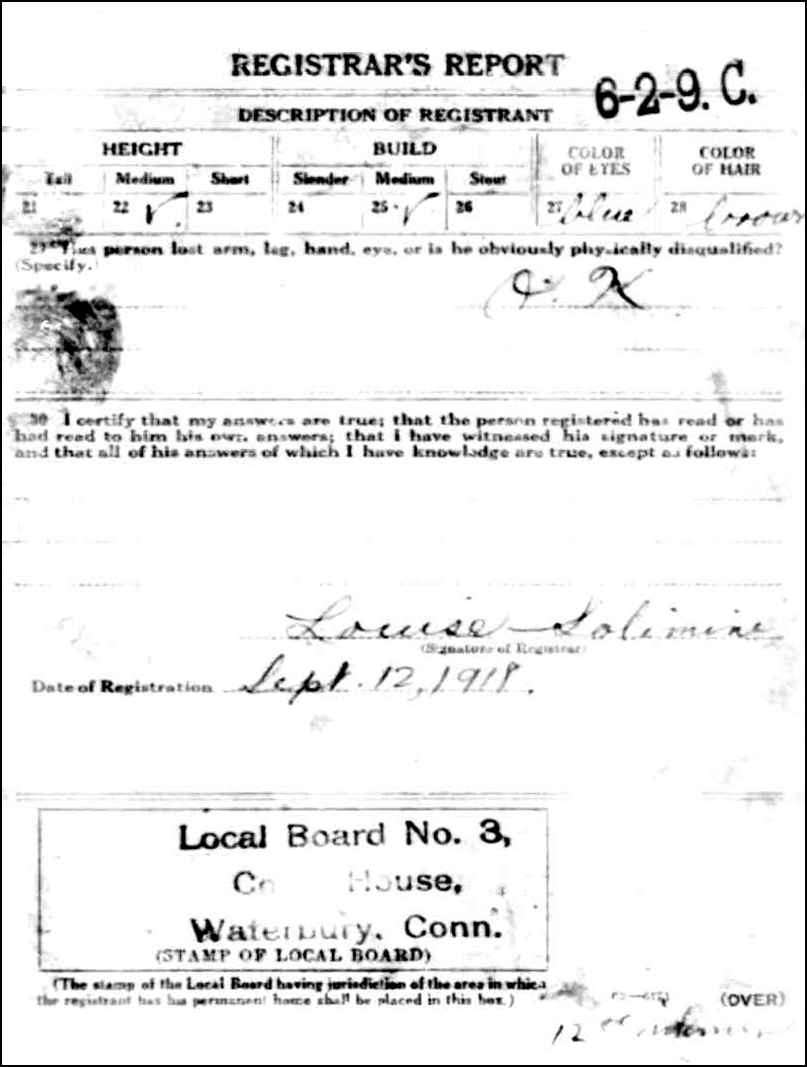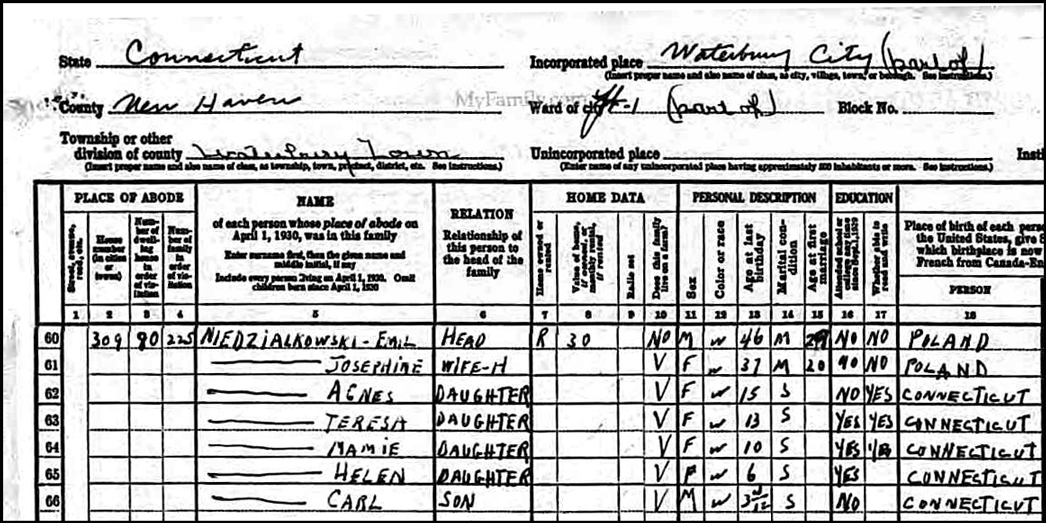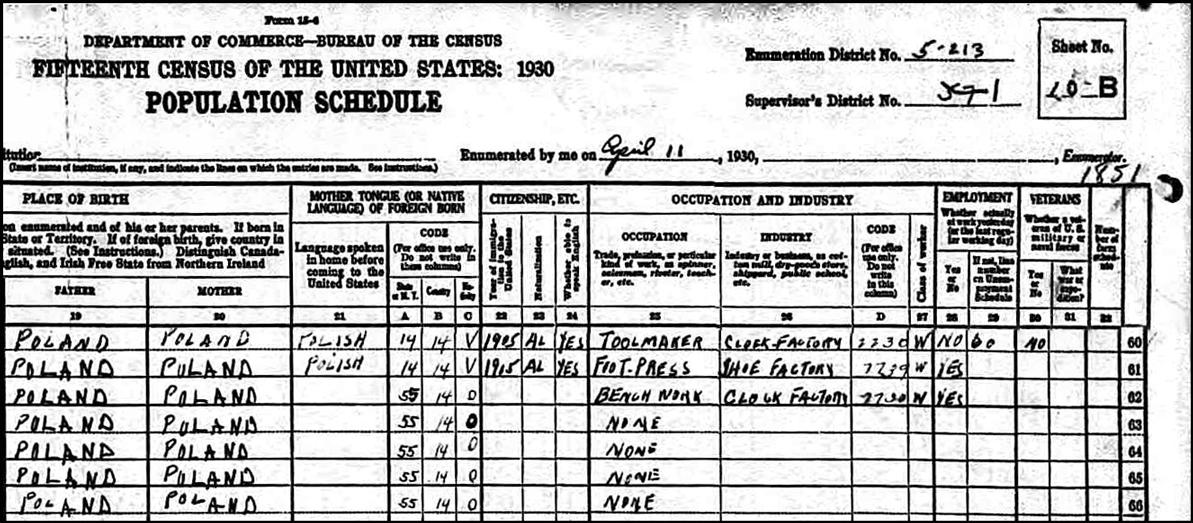When I found the 1920 US Federal Census Record for Emil Niedzialkowski, he was living in Waterbury, Connecticut at 10 Division Street. He was enumerated alone. His wife and two children were also enumerated at the same address, but on a different page of the census.
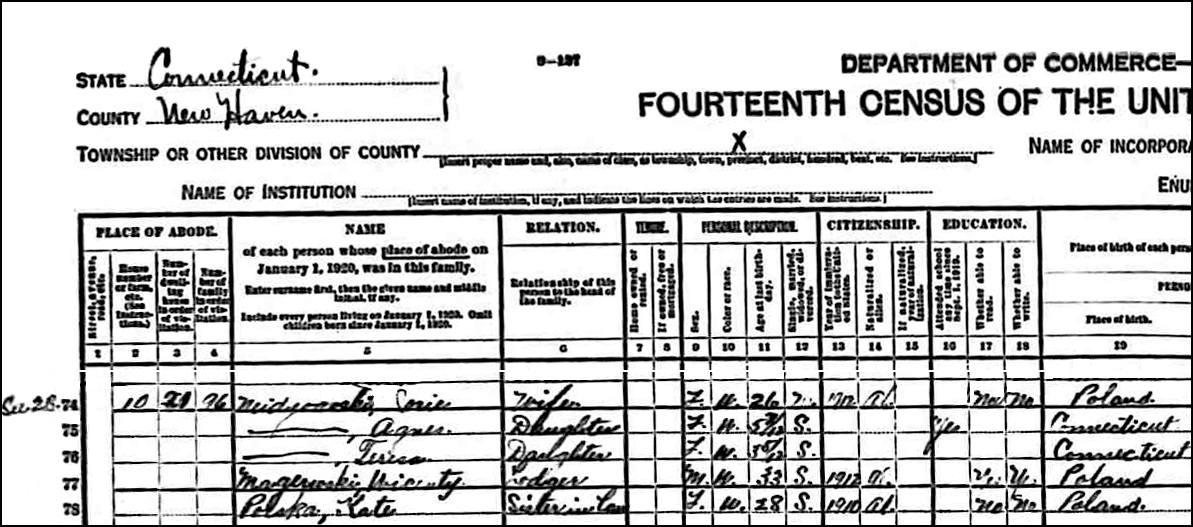
1920 US Federal Census Record for Josephine Niedzialkowski (Left)
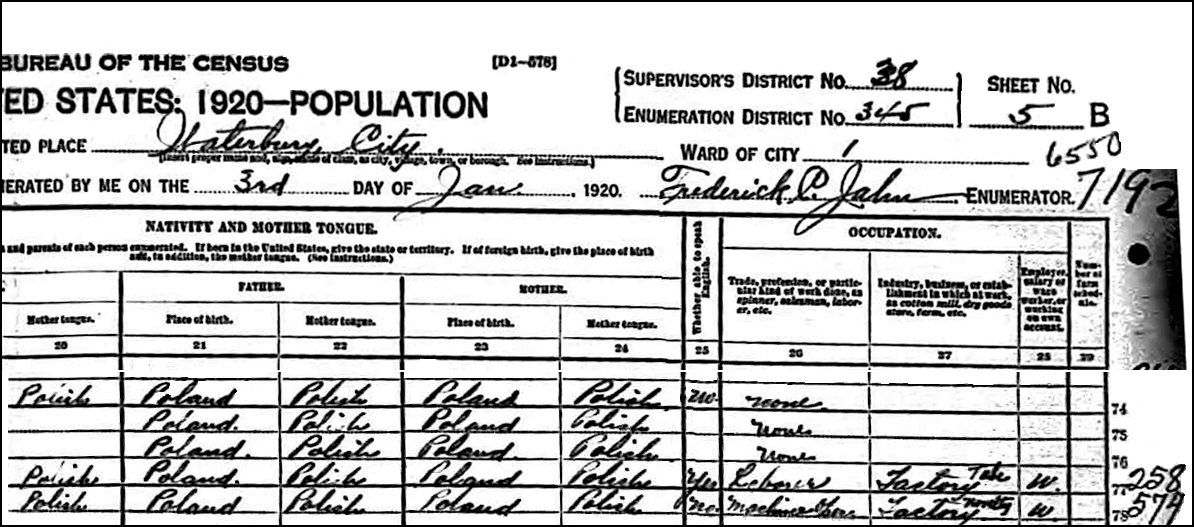
1920 US Federal Census Record for Josephine Niedzialkowski (Right)
SOURCE: 1920 U.S. Census, New Haven County, Connecticut, population schedule, Waterbury City, Ward 1, enumeration district (ED) 435, sheet 5-B, dwelling 21, family 96, Josephine Niedzialkowski; digital image, Ancestry.com (http://www.ancestry.com : accessed 19 May 2008); citing National Archives microfilm publication T625A, roll 194.
The source citation above complies with the recommendations in Mills, Elizabeth Shown. 2007. Evidence explained citing history sources from artifacts to cyberspace. Baltimore, Md: Genealogical Pub. Co.
Click on the images above to enlarge them. Click on the link for a PDF copy of the 1920 US Federal Census Record for Josephine Niedzialkowski . The record provides information that:
In 1920, Josie Niedzialkowski was a married, white female, 26 years old.
Her residence was at 10 Division Street in Waterbury, New Haven County, Connecticut.
Her residence was in the 1st Ward.
She and her parents were born in Poland, and her mother tongue was Polish.
She immigrated in 1912, and was an alien.
She was not able to read and write, and was not able to speak English; she did not attend school.
She was not employed at the time of the census.
Her daughter Agnes was a single, white female, 5-2/12 years old.
She was born in Connecticut and attended school.
Her daughter Teresa was a single, white female, 3-5/12 years old.
She was born in Connecticut and did not attend school.
A 33 year old white male lodger, Wicenty Mageroski, was living with them.
He and his parents were born in Poland, and his mother tongue was Polish.
He immigrated in 1912 and was an alien.
He was able to read and write and was able to speak English.
He was employed as a laborer in a tabe? factory.
Kate Polska, a single white female sister-in-law, was living with them.
She and her parents were born in Poland and her mother tongue was Polish.
She immigrated in 1910 and she was an alien.
She was not able to read and write, and was not able to speak English; she did not attend school.
She was employed as a laborer in a novelty factory.
The surname Niedzialkowski is misspelled as Neidzoroski.
A notation in the left margin refers back to Emil Niedzialkowski’s record on page 2-B of the same census.
Kate Polska was listed as sister-in-law of the head of household (Emil), and so she was the sister of Josephine.
From the information on the 1920 US Federal Census, I can conclude that Josephine was born in about 1893-1894, Agnes was born in about Feb 1915, Teresa was born in about Nov 1916, Wicenty was born in about 1886-1887, and Kate was born in about 1891-1892.
The enumeration district was 435, but the numbers were transposed to read 345. On Emil’s record, this error was corrected, but on Josephine’s record, the error remains.
Copyright © 2008 by Stephen J. Danko








